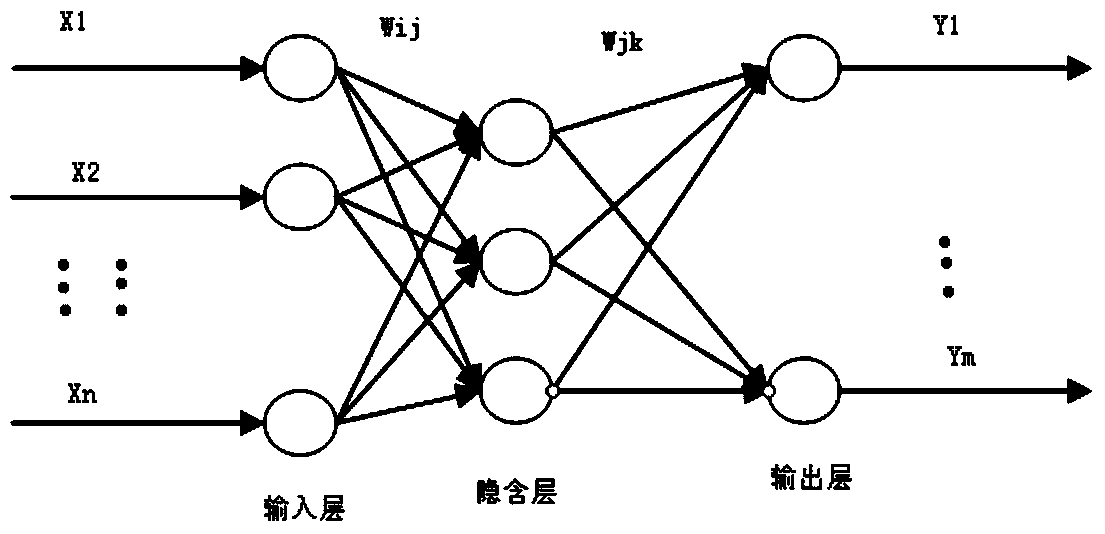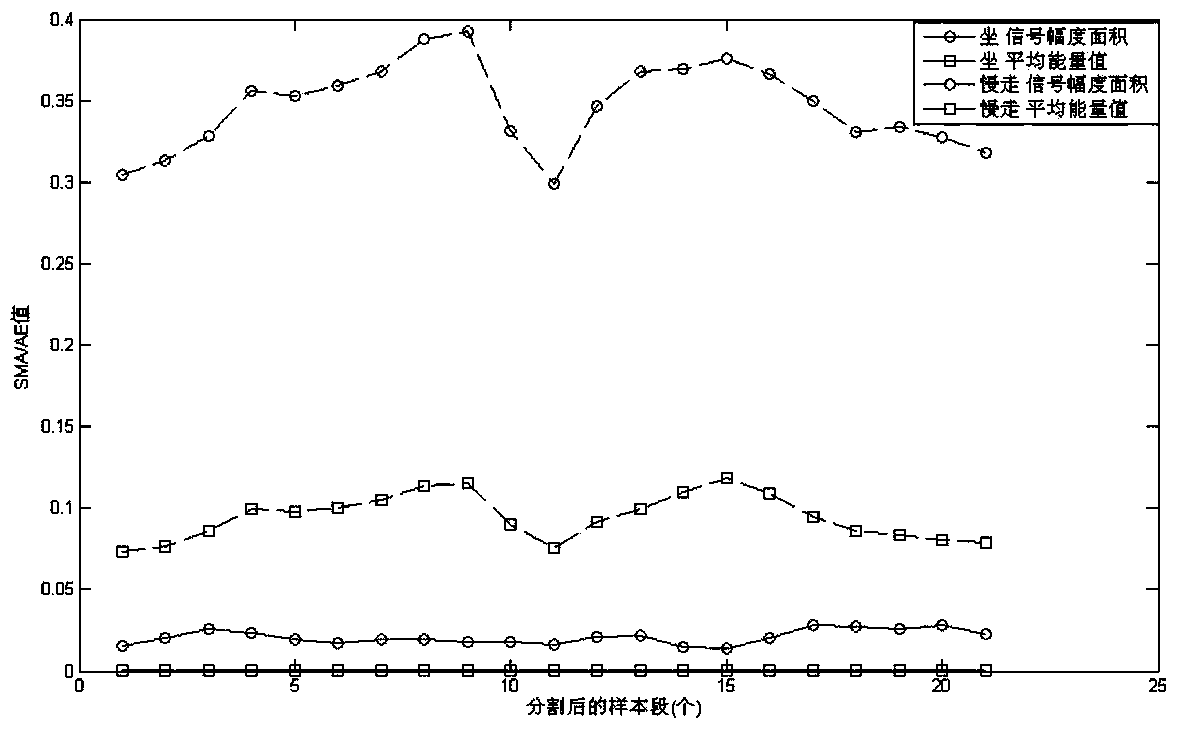Gait type identification method based on three-axis acceleration sensor and neural network
A neural network and axis acceleration technology, applied in the field of biomedical signal processing, can solve the problems of separate separation of sudden action signals, influence of misjudgment, poor screening of gait signal features, etc.
- Summary
- Abstract
- Description
- Claims
- Application Information
AI Technical Summary
Problems solved by technology
Method used
Image
Examples
Embodiment 1
[0064] According to the unified requirements of the portable electrocardiogram monitoring system, the invention performs gait type identification on the basis of acquiring the human body's natural gait acceleration signal through human body wearing.
[0065] 1) Collection of subjects' gait data
[0066] 11) The acquisition of gait signals uses Freescale's three-axis acceleration sensor MMA7260Q, the acceleration test range is ±4g, and the system sampling frequency is 200Hz. The positions of the sensors are uniformly worn on the chest and fixed with strong adhesive tape. The collected XYZ three-axis data represents the experimenter's acceleration data in the vertical direction, left and right directions, and front and rear directions.
[0067] 12) The number of subjects is 10, 4 males and 6 females (aged between 22-28 years old and weighed between 45-75kg), wearing flat shoes, sitting, standing, and walking slowly at a natural pace , Brisk walking, upstairs, and downstairs 6 kinds of...
PUM
 Login to View More
Login to View More Abstract
Description
Claims
Application Information
 Login to View More
Login to View More - R&D
- Intellectual Property
- Life Sciences
- Materials
- Tech Scout
- Unparalleled Data Quality
- Higher Quality Content
- 60% Fewer Hallucinations
Browse by: Latest US Patents, China's latest patents, Technical Efficacy Thesaurus, Application Domain, Technology Topic, Popular Technical Reports.
© 2025 PatSnap. All rights reserved.Legal|Privacy policy|Modern Slavery Act Transparency Statement|Sitemap|About US| Contact US: help@patsnap.com



